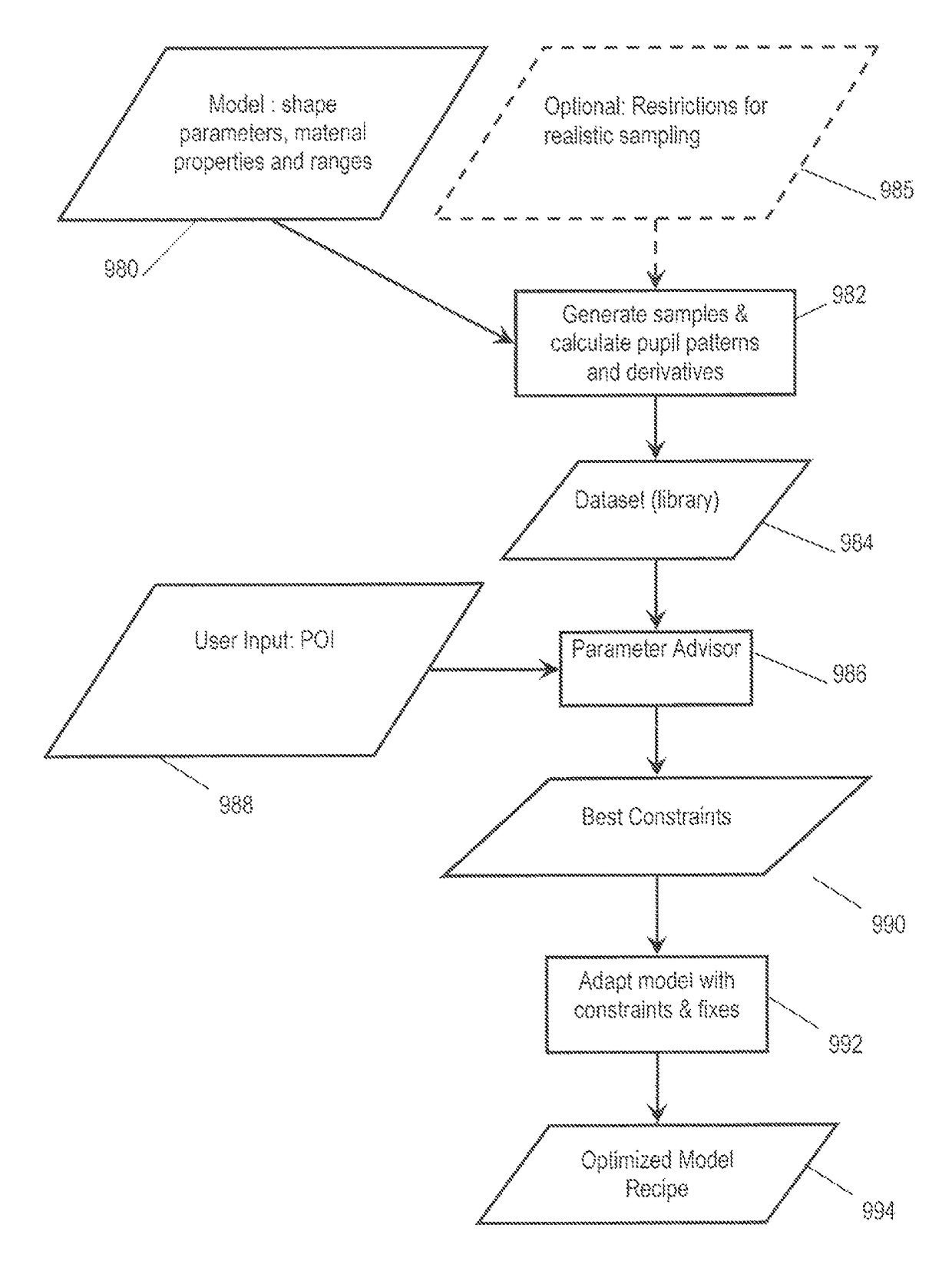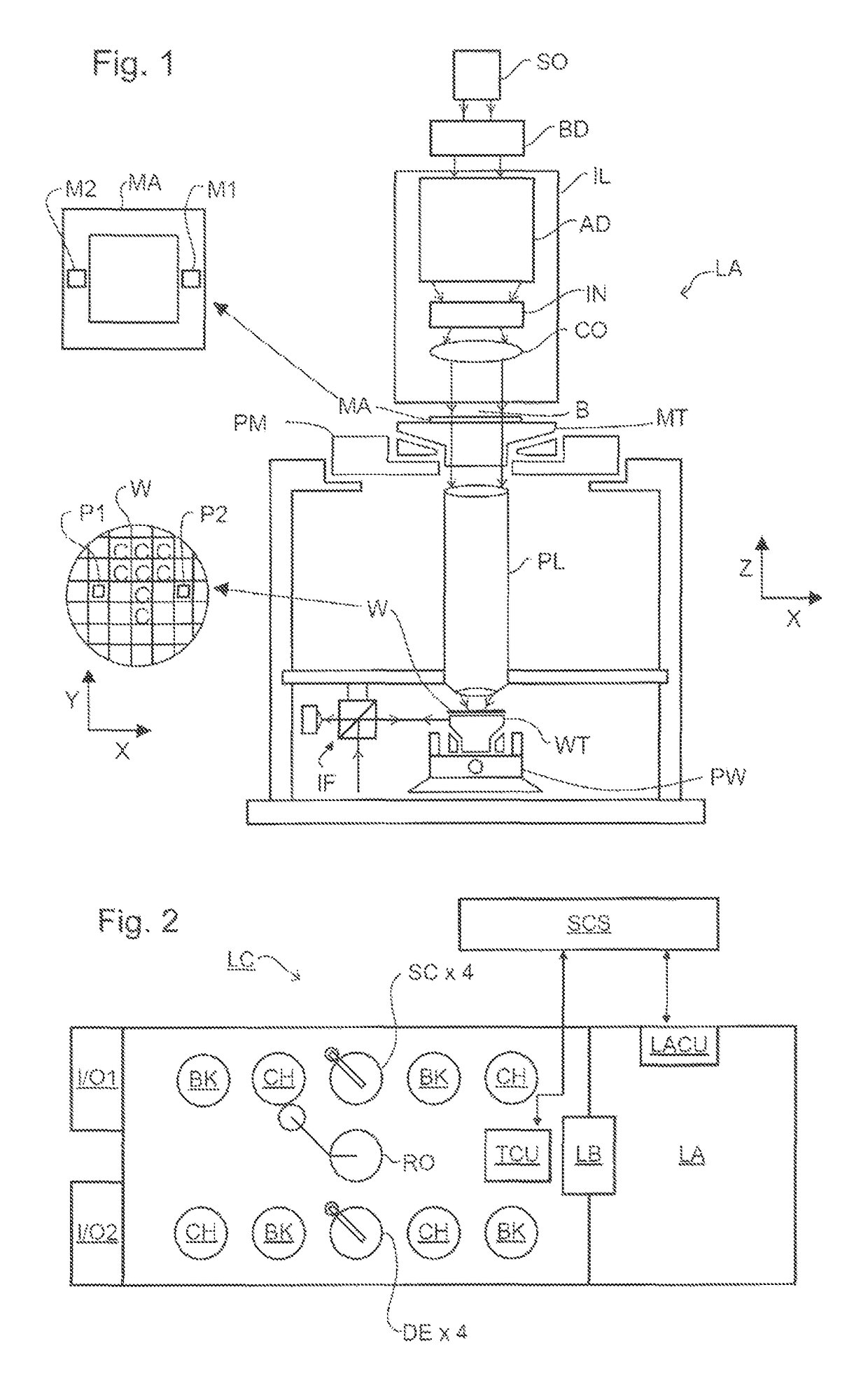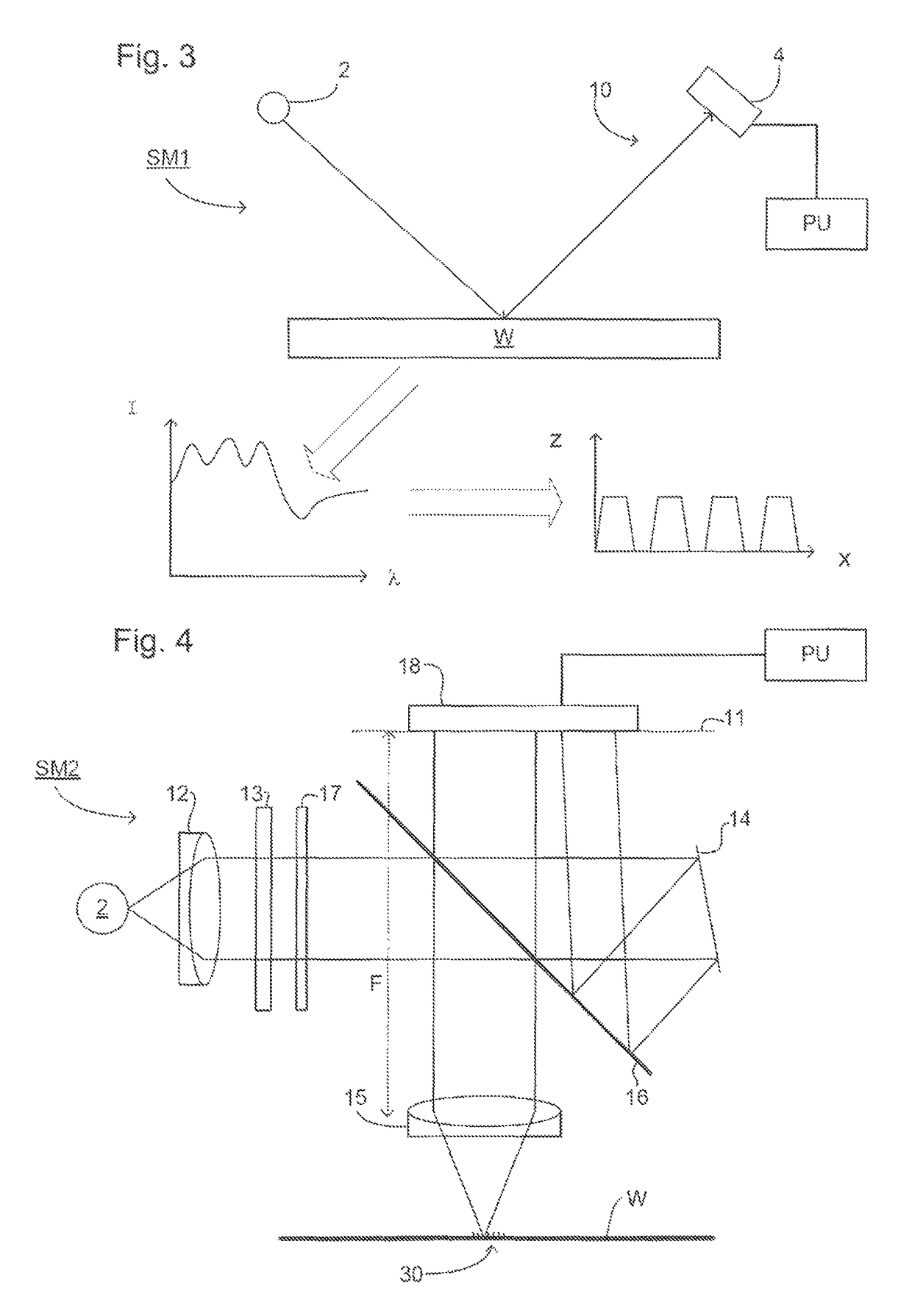Method and apparatus for measuring a structure on a substrate, computer program products for implementing such methods and apparatus
a technology of structure and substrate, applied in the direction of photomechanical apparatus, instruments, analogue processes for specific applications, etc., can solve the problems of large computational tasks, inability to accurately measure the structure on the substrate, and the risk of false matching of parameter sets that do not correspond to the measured substrate, etc., to achieve the effect of reducing the number of degrees of freedom in the model and improving the measurement tools
- Summary
- Abstract
- Description
- Claims
- Application Information
AI Technical Summary
Benefits of technology
Problems solved by technology
Method used
Image
Examples
example results
[0130]FIG. 11, according to an embodiment of the present invention, illustrates a complex target structure 30 which for the sake of experiment was formed in 75 separate fields over a 300 mm substrate in a focus-exposure matrix (FEM) process. As is well known, a non-random FEM process is designed to vary parameters of the lithographic steps in a systematic and known way across fields of a substrate such as a silicon wafer. In this target structure, layers A through G are formed in a stack on a substrate 960. The top layer G is patterned using the lithographic apparatus and has shape parameters H_G, MCD_G and SWA_G similar to features 702 in FIG. 7. These three were defined as the parameters of interest. Each underlying layer A to F has its own height (H_A etc.) and material properties. For the purposes of experimentation, nominal values for all heights are known, but only layer A is fixed. Material properties such as refractive index were also fixed. This leaves 10 floating parameter...
PUM
| Property | Measurement | Unit |
|---|---|---|
| wavelength | aaaaa | aaaaa |
| wavelength | aaaaa | aaaaa |
| thickness | aaaaa | aaaaa |
Abstract
Description
Claims
Application Information
 Login to View More
Login to View More - R&D
- Intellectual Property
- Life Sciences
- Materials
- Tech Scout
- Unparalleled Data Quality
- Higher Quality Content
- 60% Fewer Hallucinations
Browse by: Latest US Patents, China's latest patents, Technical Efficacy Thesaurus, Application Domain, Technology Topic, Popular Technical Reports.
© 2025 PatSnap. All rights reserved.Legal|Privacy policy|Modern Slavery Act Transparency Statement|Sitemap|About US| Contact US: help@patsnap.com



